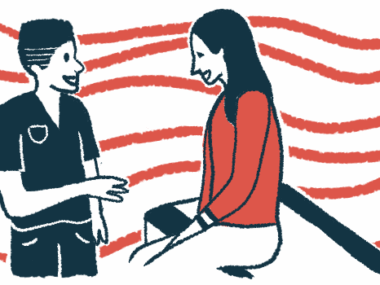aHUS Alliance Asking Patients Worldwide to Join Rare Disease Day Project
Written by |

For Rare Disease Day on Feb. 28, aHUS Alliance Global Action is inviting people worldwide to take part in a video/slideshow project aimed at raising awareness of atypical hemolytic uremic syndrome (aHUS) and the needs of its community.
To participate, patients and caregivers are asked to send a patient’s photo, along with pertinent information that includes length of time to diagnosis, aHUS treatment, and what “feeling better” means to the patient. Customized slides will be created based on information gathered, and debut on Feb. 28 as part of the organization’s presentation marking the 14th annual Rare Disease Day.
Submissions should be sent by Feb. 17 to [email protected]. A sample email and more information is available on the group’s webpage release for this project.
Because aHUS is an extremely rare condition — it’s estimated to affect about 2 people for every 1 million — the organization hopes to get as many entries as possible.
“Atypical haemolytic uraemic syndrome not only has different spellings and terminology, but updated differences in its classification means that numbers of aHUS patients worldwide are likely to be a topic for further exploration and research,” the organization states in its release.
“Given the small numbers of people diagnosed with atypical HUS, we’re appealing to global aHUS patient voices to join together and help raise awareness for the challenges and needs of aHUS families around the world.”
The video project supports the organization’s now-closed aHUS diagnosis survey, which aims to capture diagnosis process timelines, symptom severity, and health effects. It also seeks to provide more understanding of the aHUS diagnosis pathway and what patients think or feel about it. The organization plans to report on its findings in the upcoming months.
Rare Disease Day is observed each year on the last day of February, with a goal of heightening awareness and raising money to support research and care for the many millions of people thought to be living with one of the roughly 7,000 known rare disorders. A disease is defined as rare in the United States when it affects fewer than 200,000 residents at any given time. The criteria in Europe is fewer than 1 in every 2,000 people.
Created in 2008 by Eurordis, the event is aimed at the general public, as well as policymakers, public authorities, industry representatives, scientists, and health professionals.
“On Feb. 28, 2021, the world will join together to raise awareness for rare diseases like aHUS,” aHUS Alliance Global Action stated.
The organization is an umbrella group of aHUS advocates and patient organizations in more than 30 countries. It participates in Rare Disease Day annually with articles, graphics, and projects with a specific focus on aHUS.





